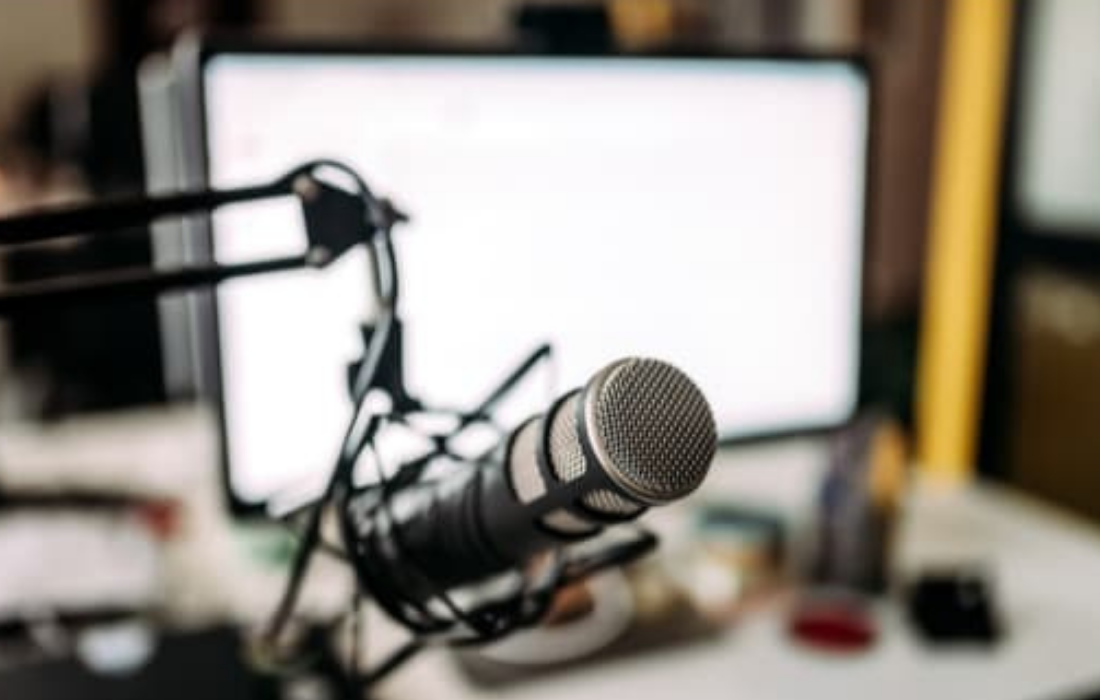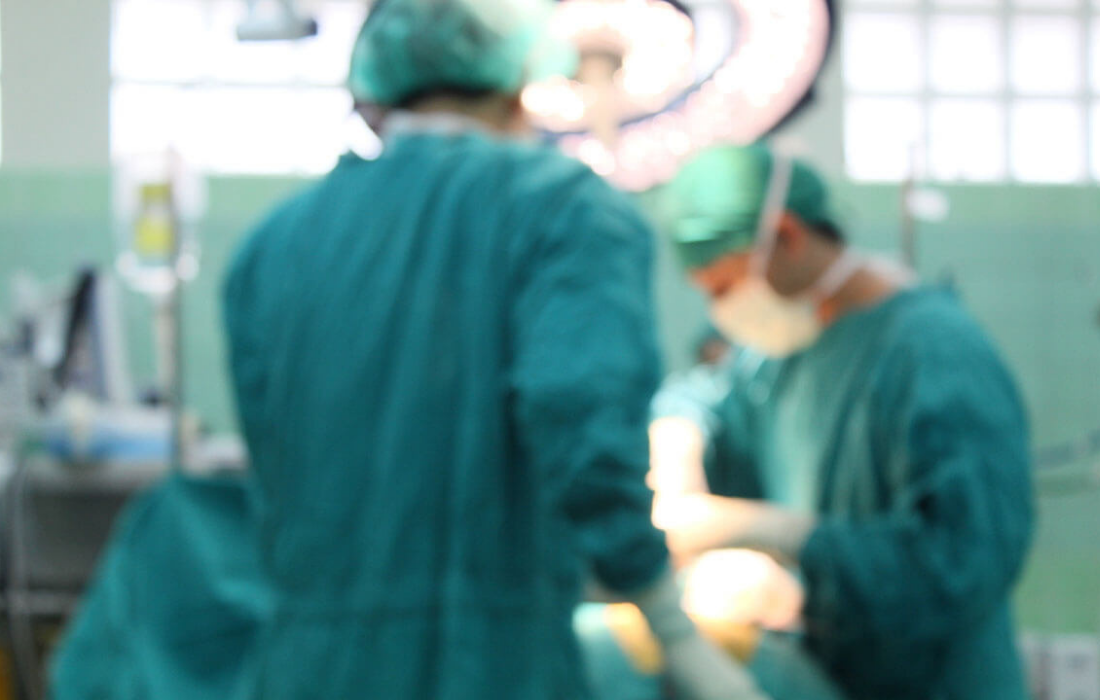What is Scoliosis?
Scoliosis is an abnormal curvature of the spine. The normal spinal curves create an S shape of the spine when viewed from the side. These curves are referred to as kyphosis (bowing out, at the upper back) and lordosis (curving in, at the neck and the lower back). These curves, which occur in the neck, upper and lower back, serve to align the head with the pelvis and to support the even distribution of the weight of the body and protect the spinal cord.
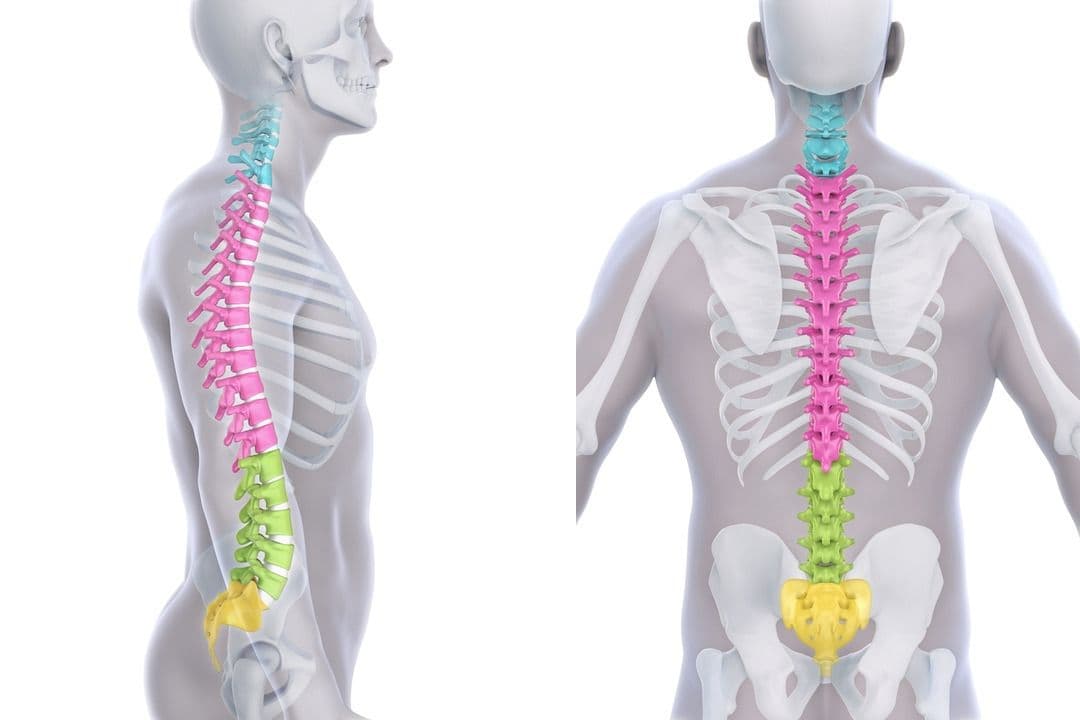
However, when the spine’s curves are side-to-side, and appear in an S shape when viewed from the back, this is called scoliosis.
Adult Scoliosis
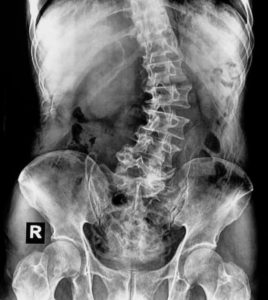 There are two types of adult scoliosis: idiopathic and degenerative. Idiopathic adult scoliosis is, for the most part, an extension of adolescent idiopathic scoliosis—something that an adult had as a young person.
There are two types of adult scoliosis: idiopathic and degenerative. Idiopathic adult scoliosis is, for the most part, an extension of adolescent idiopathic scoliosis—something that an adult had as a young person.
The other type of scoliosis in adults, although less frequents than idiopathic, is degenerative scoliosis. This occurs with spinal disc and facet joint degeneration from such conditions as arthritis and osteoporosis, or it can also be hereditary.
Degenerative scoliosis usually affects those from age 65 onward. Adult-onset scoliosis affects men and women in roughly equal proportions. The prevalence is high, and the number of adults who have it is anticipated to increase as the population ages.
Adolescent Versus Adult Scoliosis
Scoliosis in children usually develops from ages 10 to 15, during the growth spurt. While it is present equally in both girls and boys, it is much more likely among females for the curvature to progress to the point that it requires treatment.
Adolescent idiopathic scoliosis is present in more than 80 percent of cases, (idiopathic meaning that the cause is unknown). Although scoliosis can be present at birth—usually caused by neuromuscular conditions such as cerebral palsy and muscular dystrophy—in the majority of cases it is idiopathic.
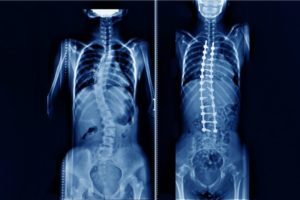
Spine specialists treat adolescent and adult scoliosis differently. The biggest difference is in bracing. Wearing a back brace can be an effective way to prevent adolescent scoliosis from getting worse, and sometimes can even reverse the scoliosis curves. However, bracing has a limited effect on adults, and therefore minimal role in treating adult scoliosis.
Symptoms
Adults can have more symptoms than adolescents when it is caused by degeneration in discs and facet joints. This type of degeneration can also lead to spinal stenosis, a narrowing of the spinal canal which puts pressure on the spine and nerves.
There may be little or no pain associated with adult scoliosis; however, pain may develop over time. Scoliosis symptoms include:
- Back leg pain and stiffness (the most common symptoms)
- Jolt-like pain radiating to the buttock or leg
- Cramping or numbness in the legs as a result of pinched nerves
- Pain that is worse in the morning and with activity
- Fatigue
- Uneven shoulders, hips or waist
- Body lean to one side
- Height loss
- Changes in bowel and bladder habits
Causes and Risk Factors
Adult scoliosis can be a result of the any of the following:
- An undiagnosed or previously treated case of pediatric scoliosis
- Being over age 50
- Changes in the spine due to aging
- Degenerative conditions of the spine, such as those caused by osteoarthritis or osteoporosis
- Family history
- Spinal injury, which can deform the vertebrae
Lifestyle can also contribute to the onset of scoliosis. This includes:
- Smoking, a leading contributing factor to neck and back problems
- Being overweight or obese
- Lack of physical fitness, resulting in weak core muscles of the trunk
Diagnosis
In conditions such as scoliosis, a physician will begin by taking a medical history of the patient, including details of the current condition, any past injuries, family history and lifestyle habits. The physician may then examine the patient’s spine, palpate it and observe the patient in different postures and positions. In addition, tests may be administered to check for strength and flexibility.
Part of a scoliosis diagnosis is the Adam’s forward bend test. This is the test often used in schools or by physicians to check for scoliosis. The patient bends forward at the waist so the doctor can view the horizonal plane of the spine to check for any abnormalities.
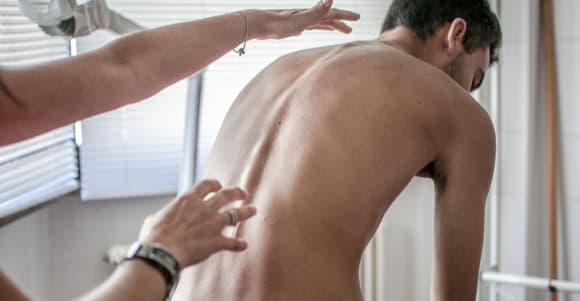
A scoliometer is used as a non-invasive instrument (it resembles a protractor) that measures the rotation of the vertebral neck and back.
Diagnostic imaging may be ordered, depending on the physician’s initial evaluation. A standing X-ray may be ordered to measure the Cobb angle, a test of the spine. If this measurement determines that a sideways curvature is at least 10 degrees, the patient is considered to have scoliosis. While a magnetic resonance imaging (MRI) scan is ordered more rarely, it is useful when the patient has significant spinal abnormalities or leg pain.
Treatment
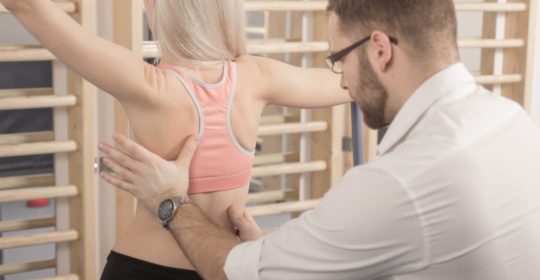 Treatment for scoliosis depends on the circumstances of the patient: the health history, severity of the spinal curvature, symptoms and type or cause of scoliosis. Also, note that treatment for adults, whose skeletons have reached maturity, is different than for adolescents.
Treatment for scoliosis depends on the circumstances of the patient: the health history, severity of the spinal curvature, symptoms and type or cause of scoliosis. Also, note that treatment for adults, whose skeletons have reached maturity, is different than for adolescents.
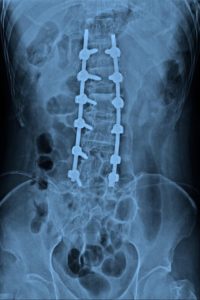 Treatment may include:
Treatment may include:
- Periodic monitoring of the patient’s condition
- Exercises to strengthen the core muscles and improve flexibility
- Bracing, which may be used only for brief periods to relieve pain; not recommended long-term as it can further weaken the core muscles
- Nerve block injections or epidurals, which can provide temporary relief of painful symptoms, specifically leg pain due to arthritis or pressure on nerves
- Spinal fusion surgery, which involves using screws and rods to bring the vertebrae together and hold them in straighter alignment
If you have scoliosis that is affecting your quality of life, request an appointment at University Orthopaedic Associates. Our spine experts can recommend a treatment plan that will work for you and your life circumstances.



